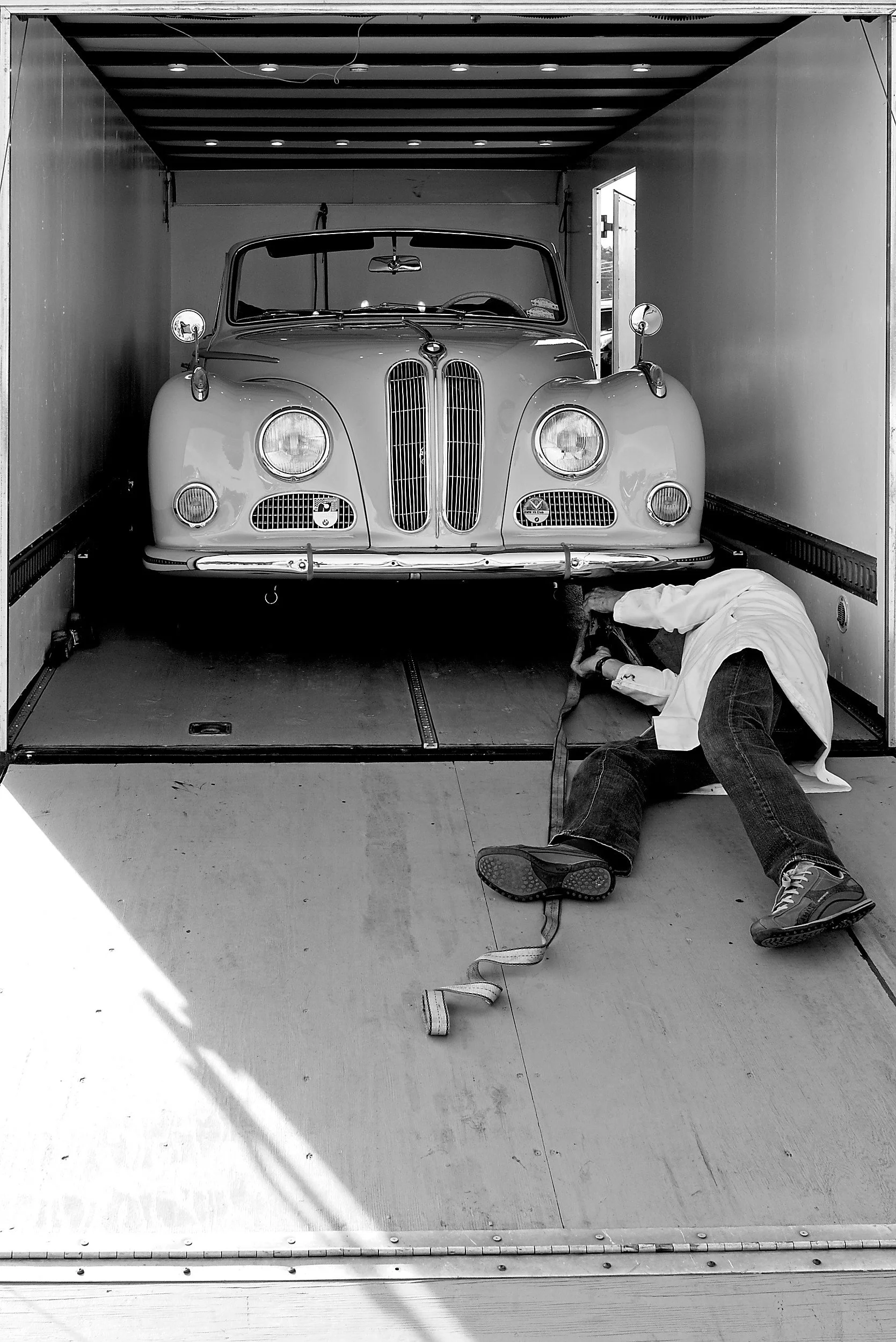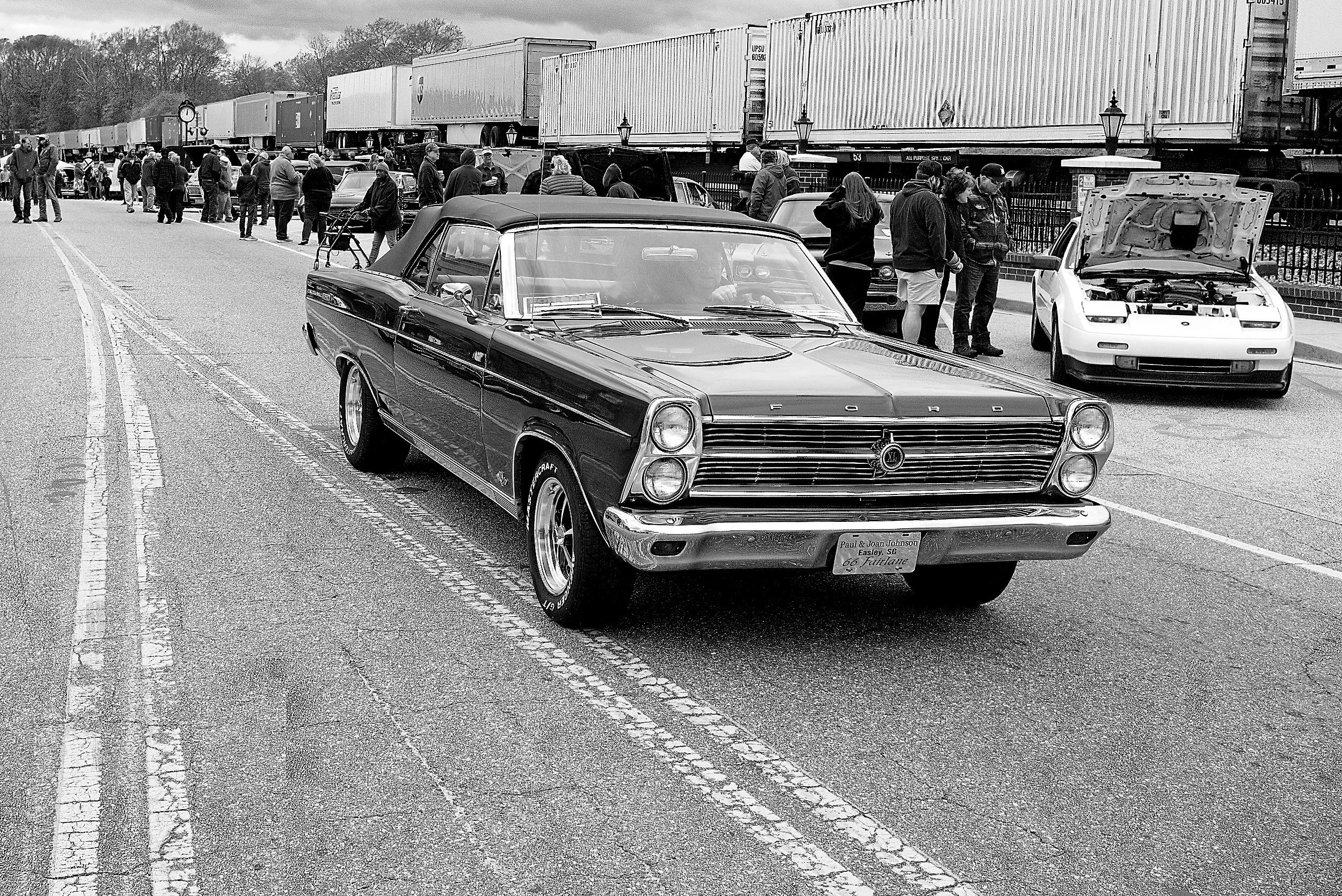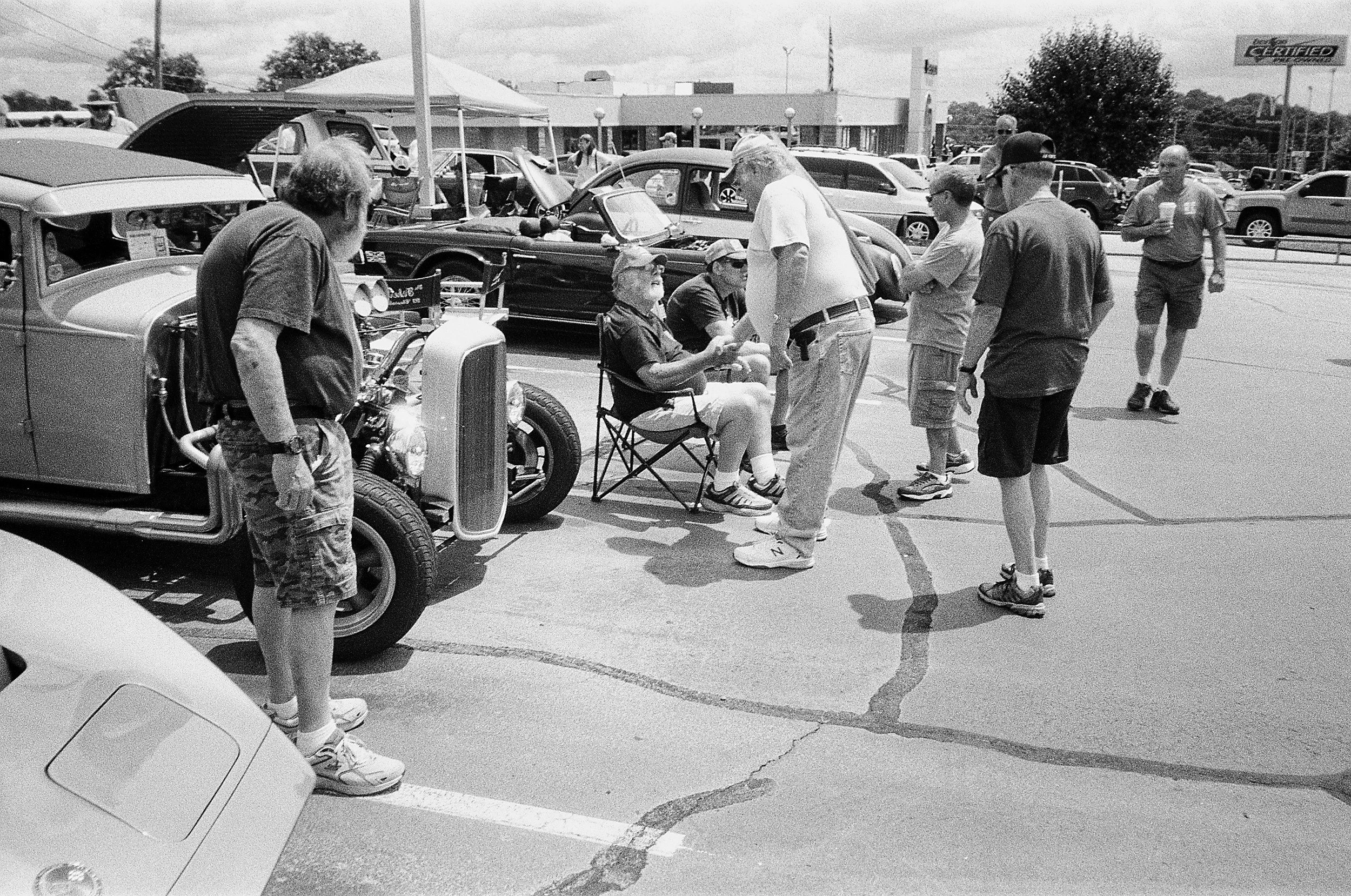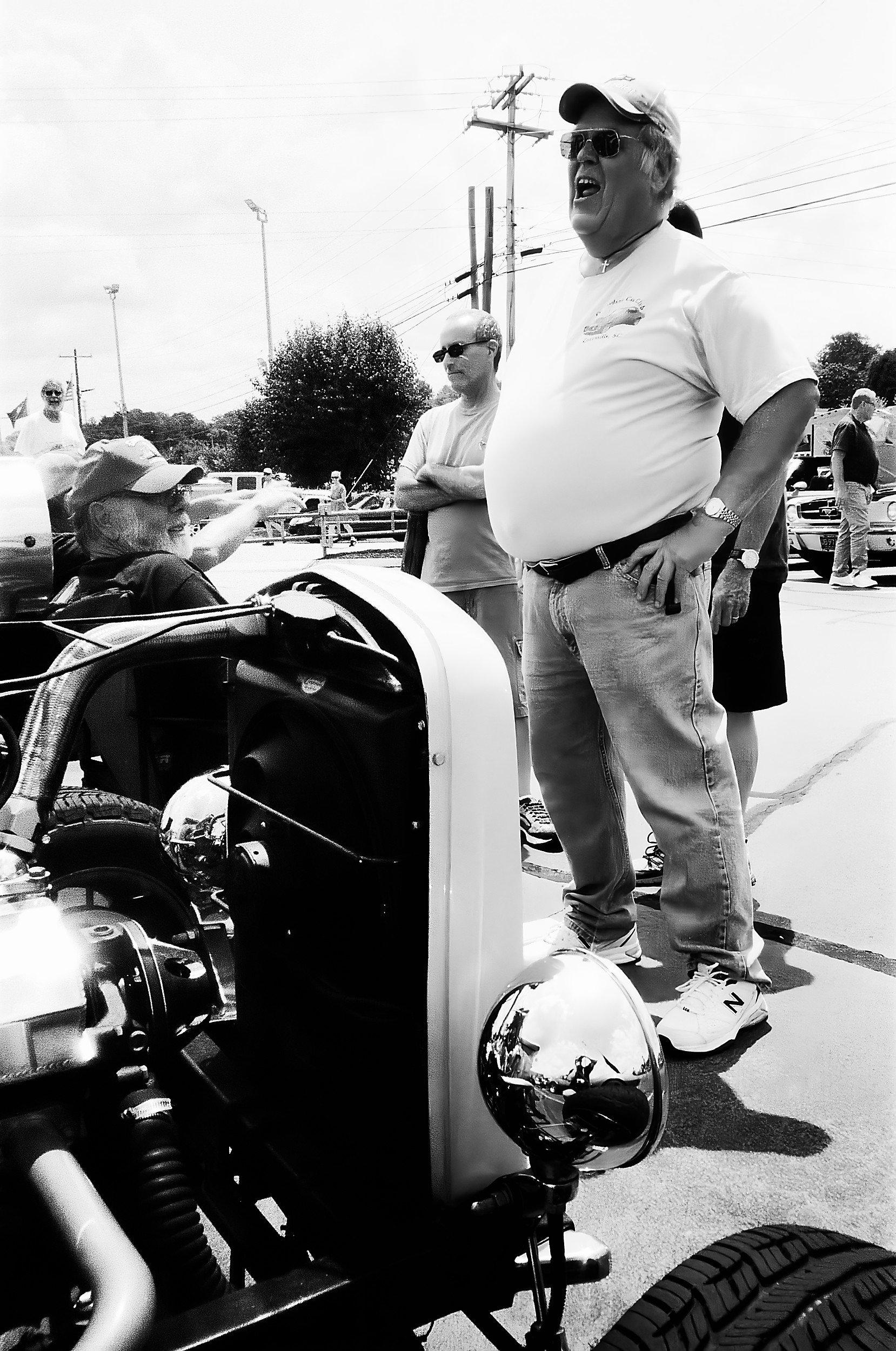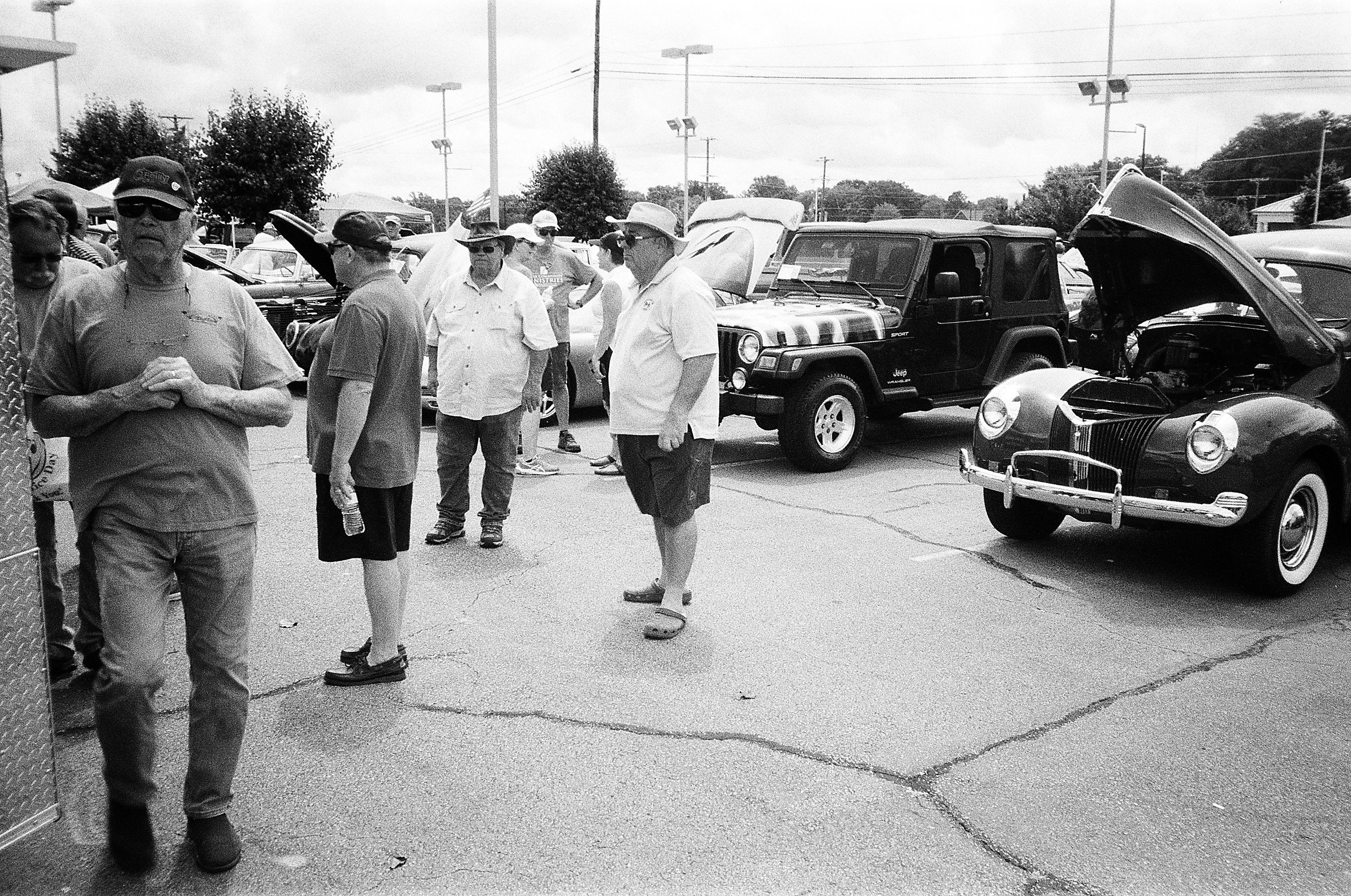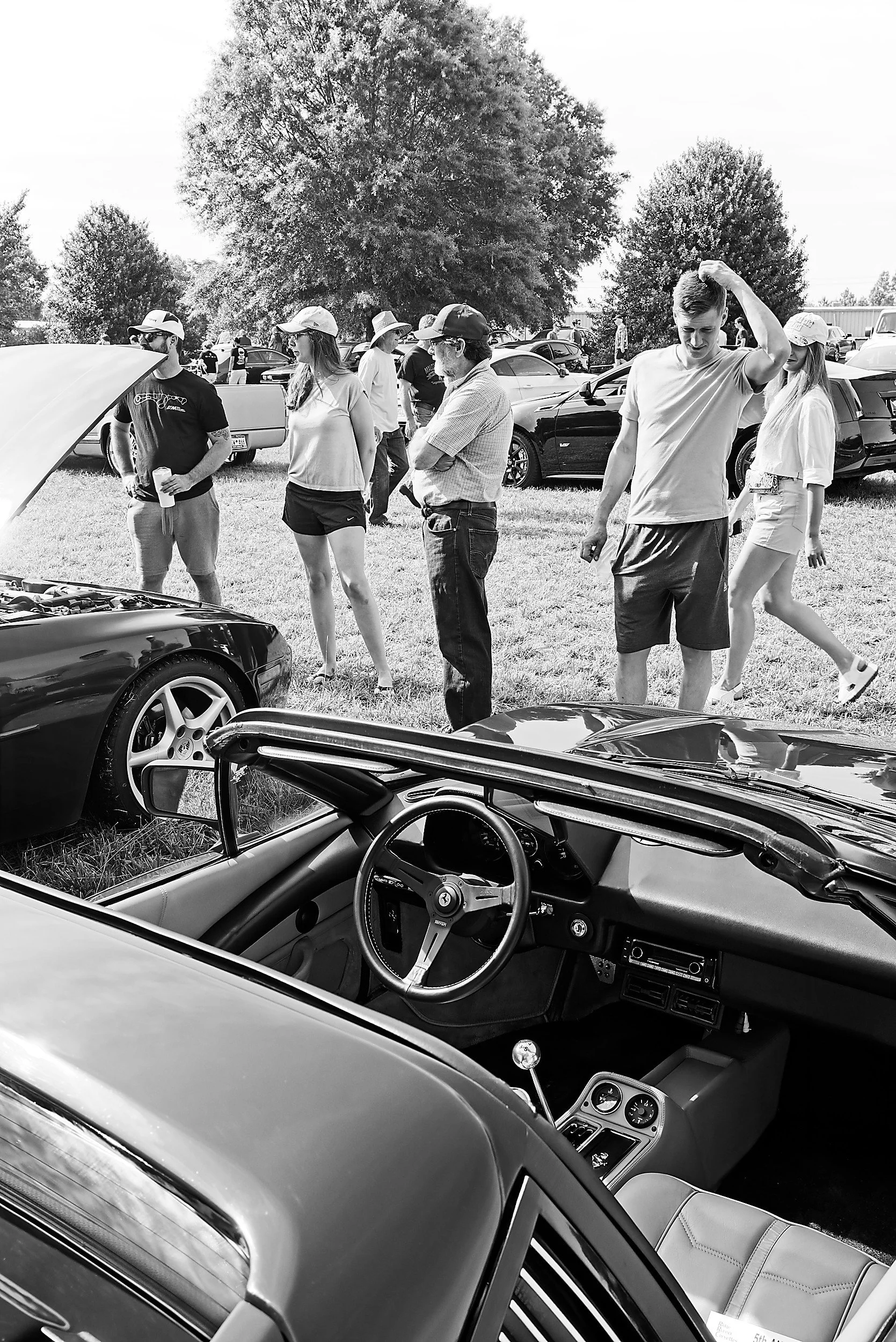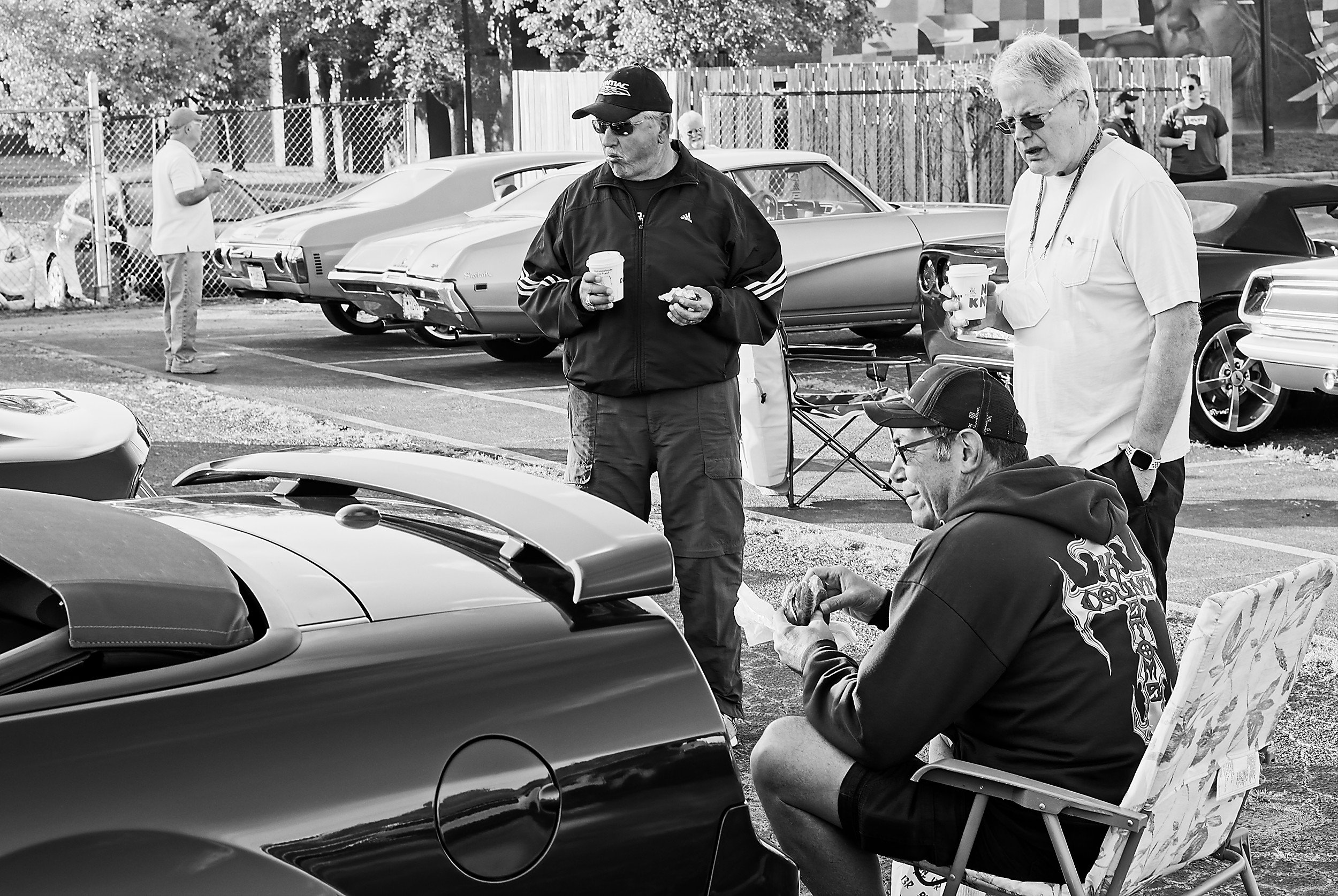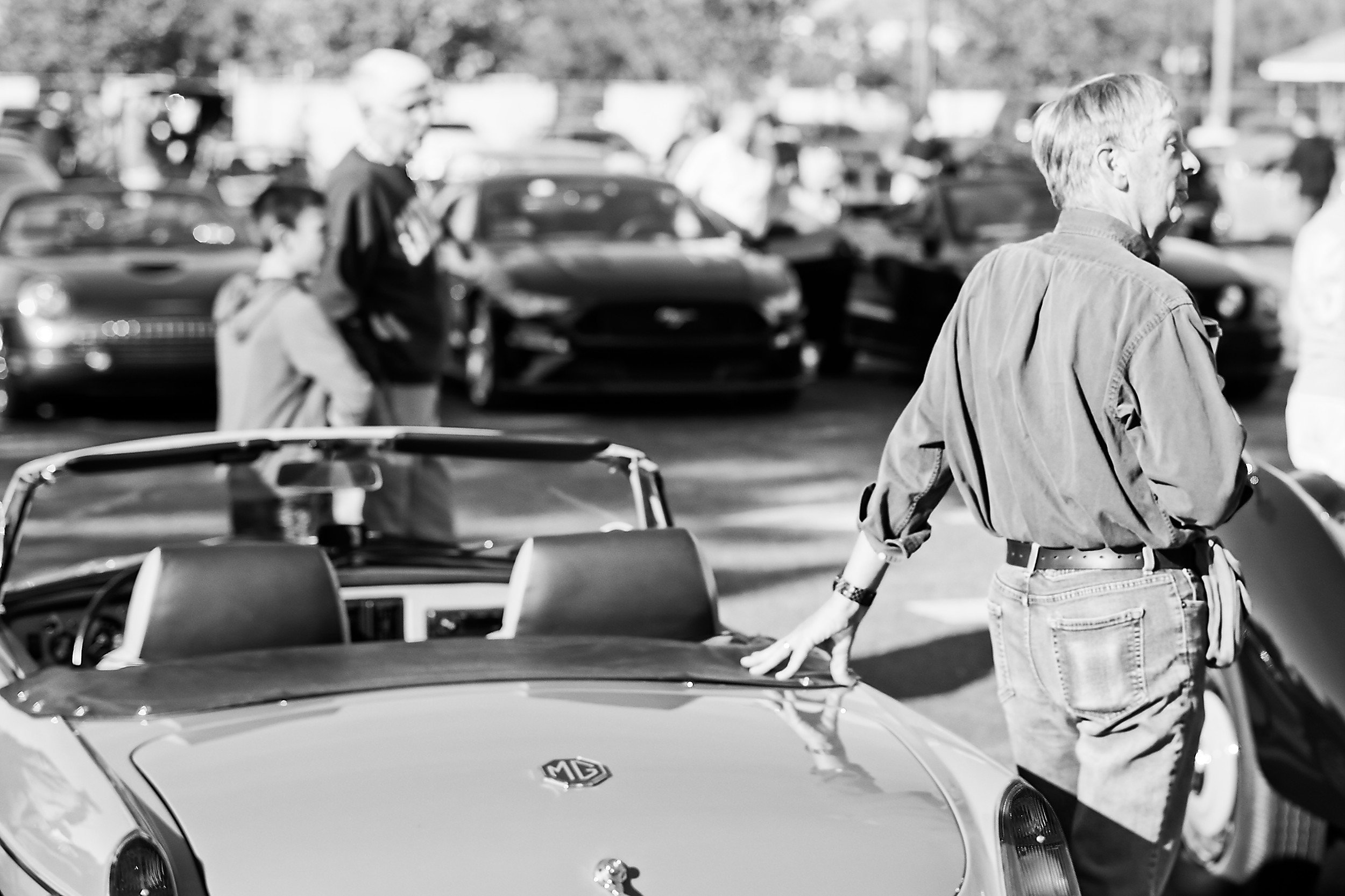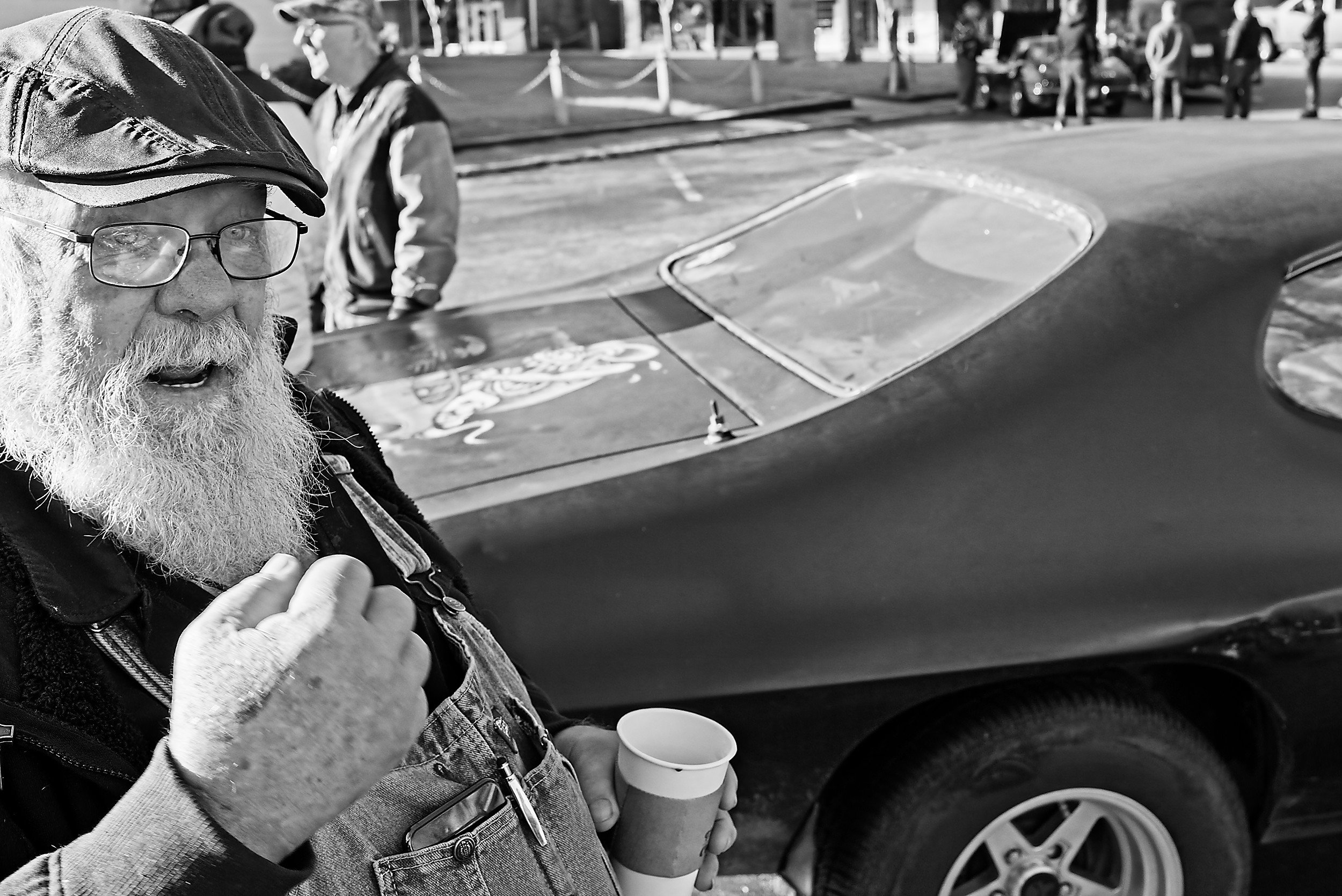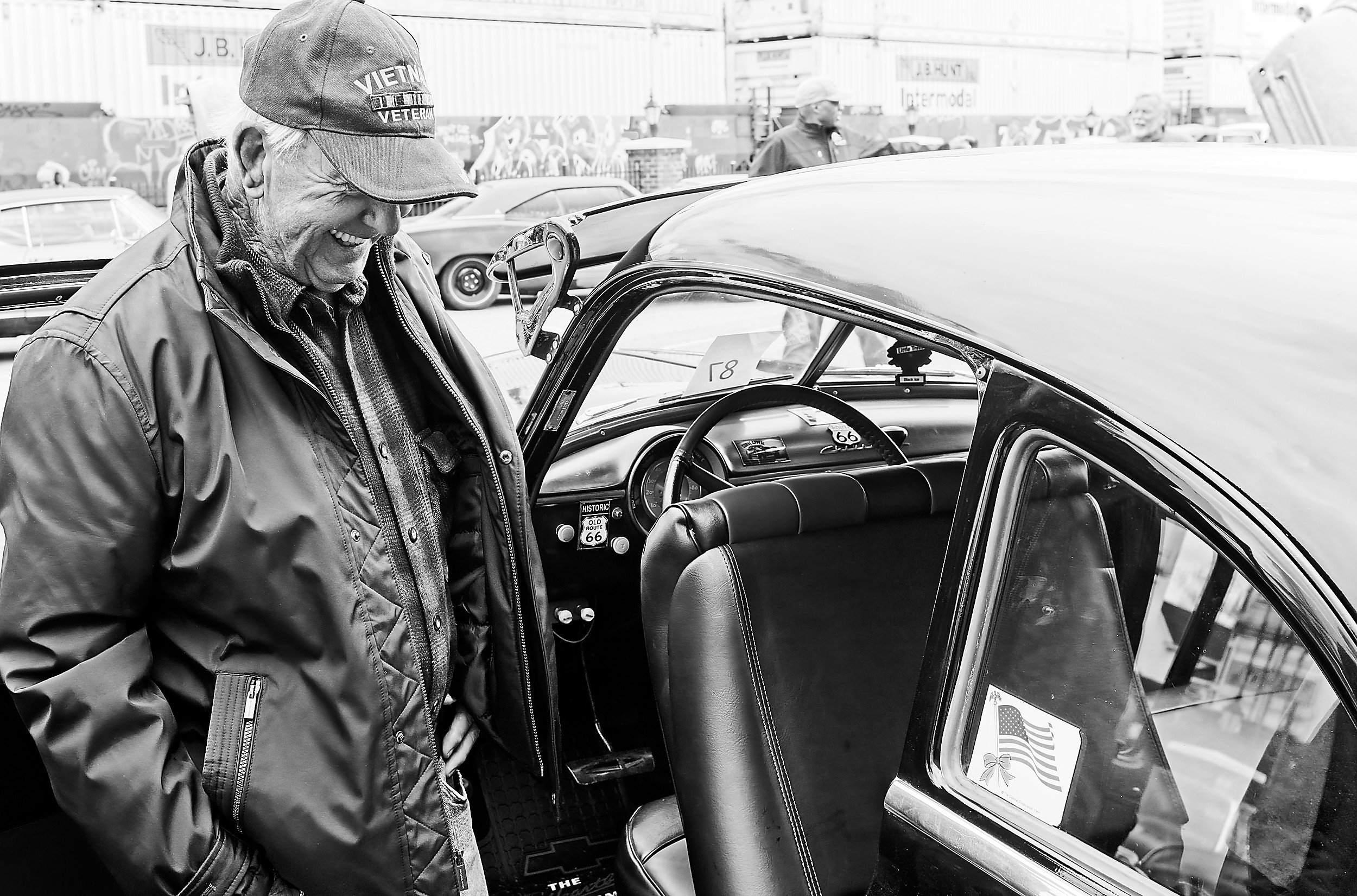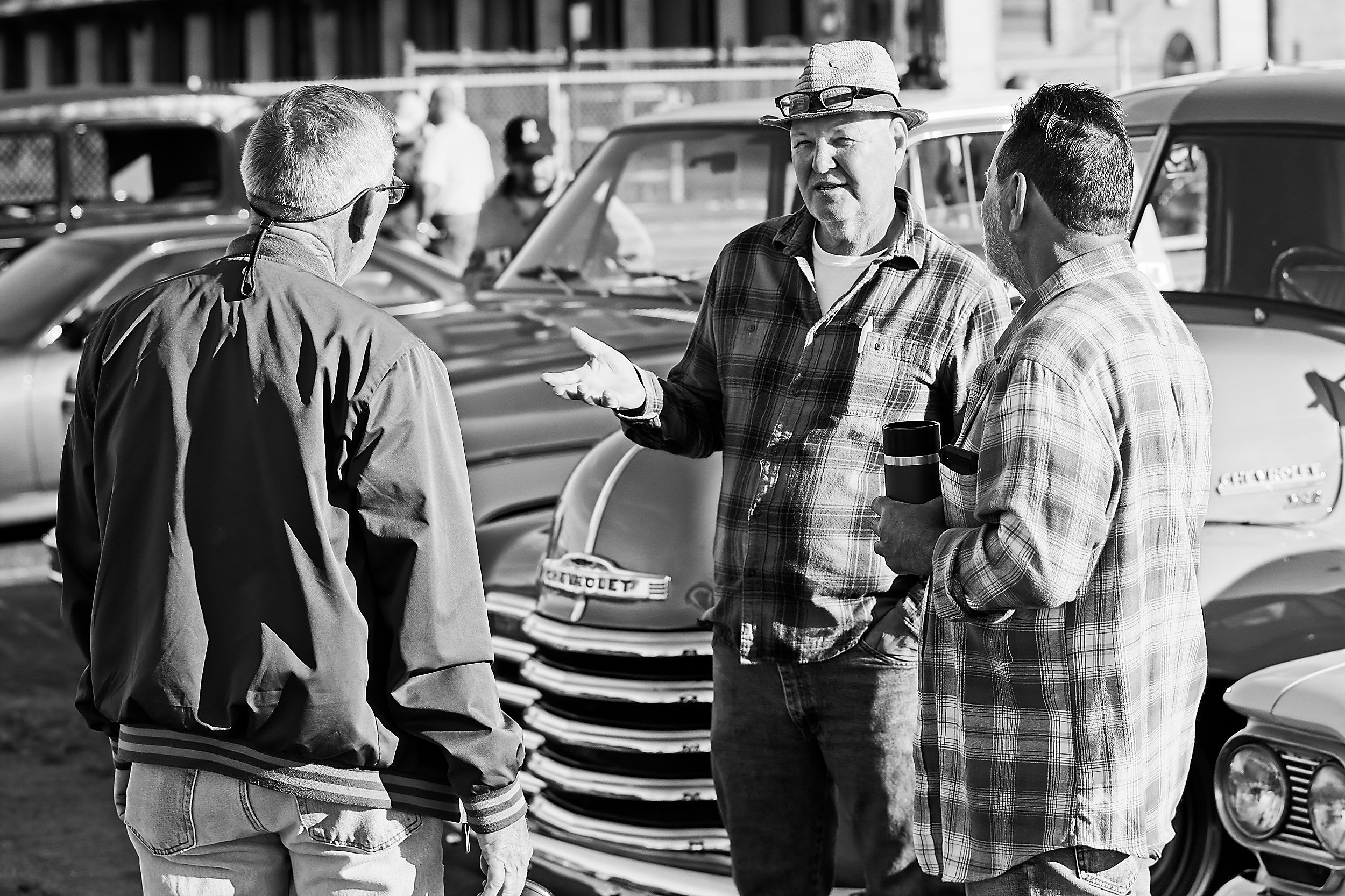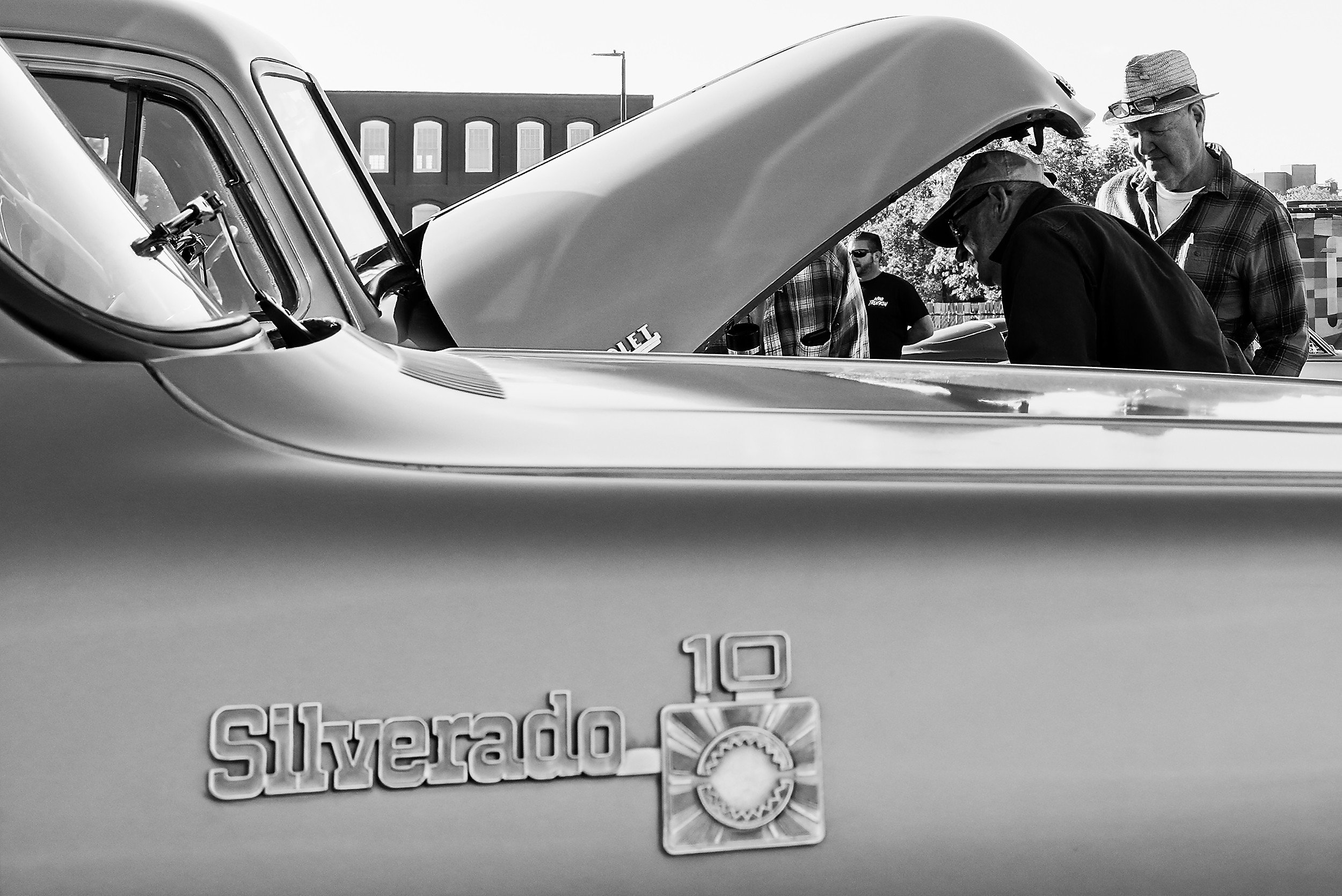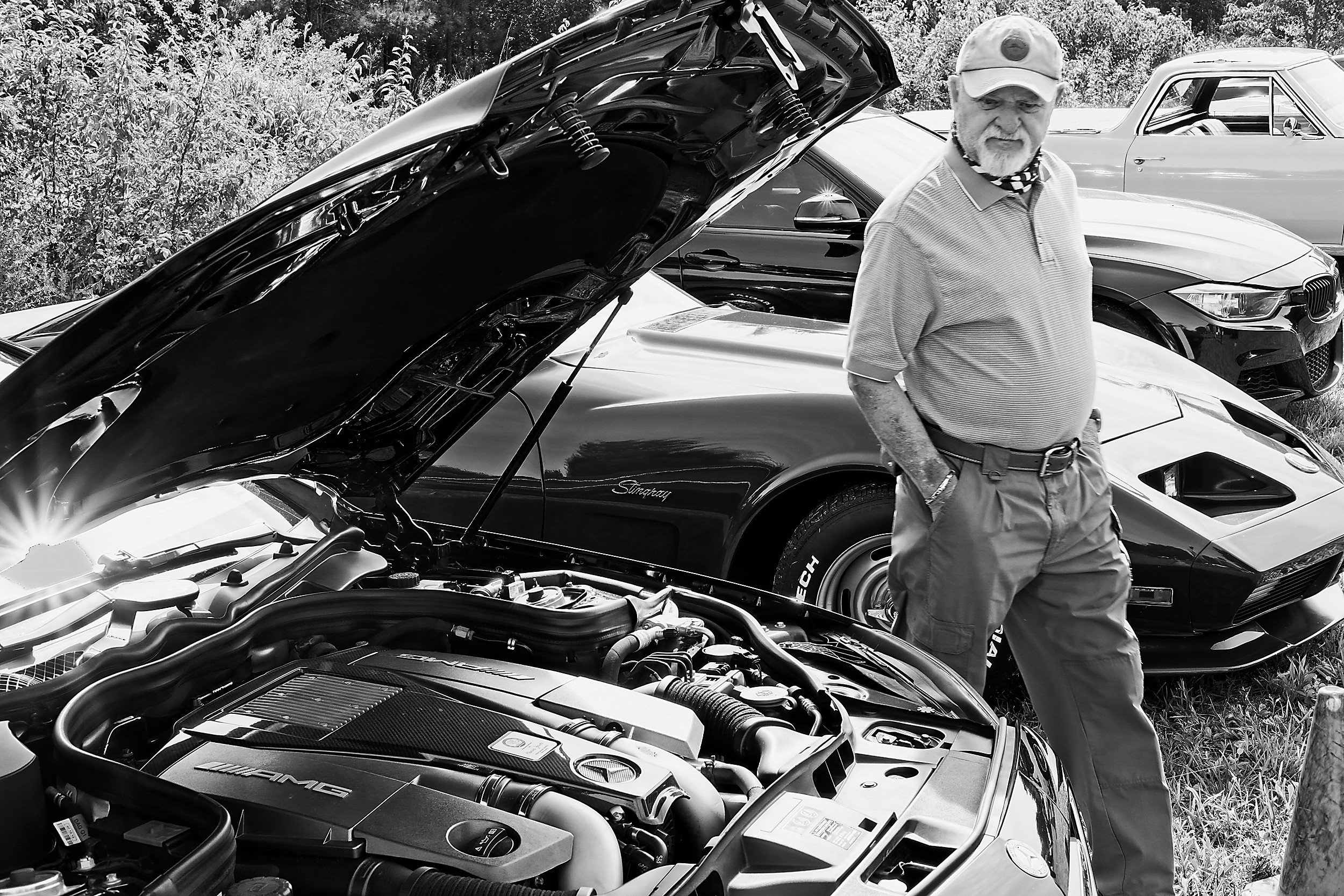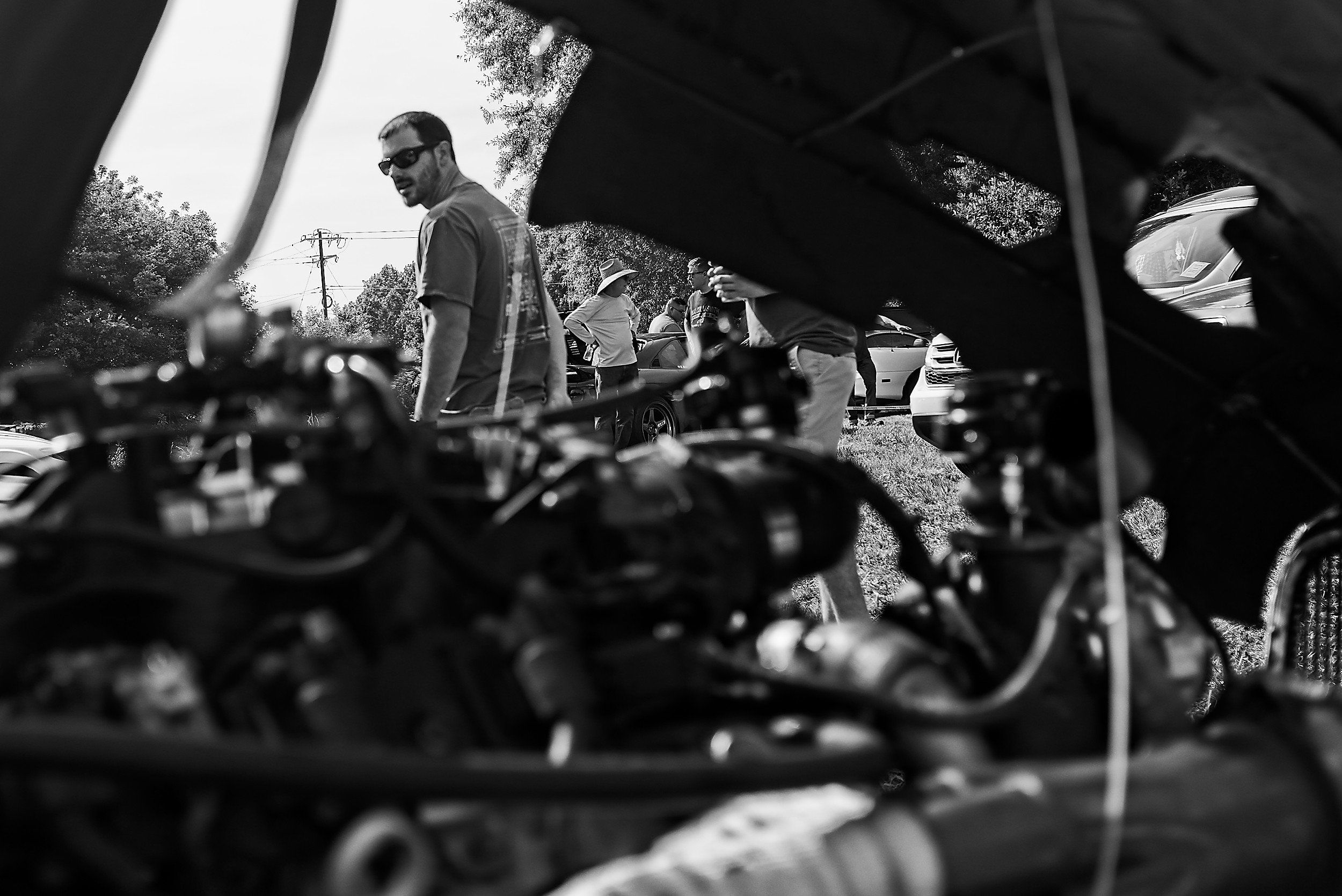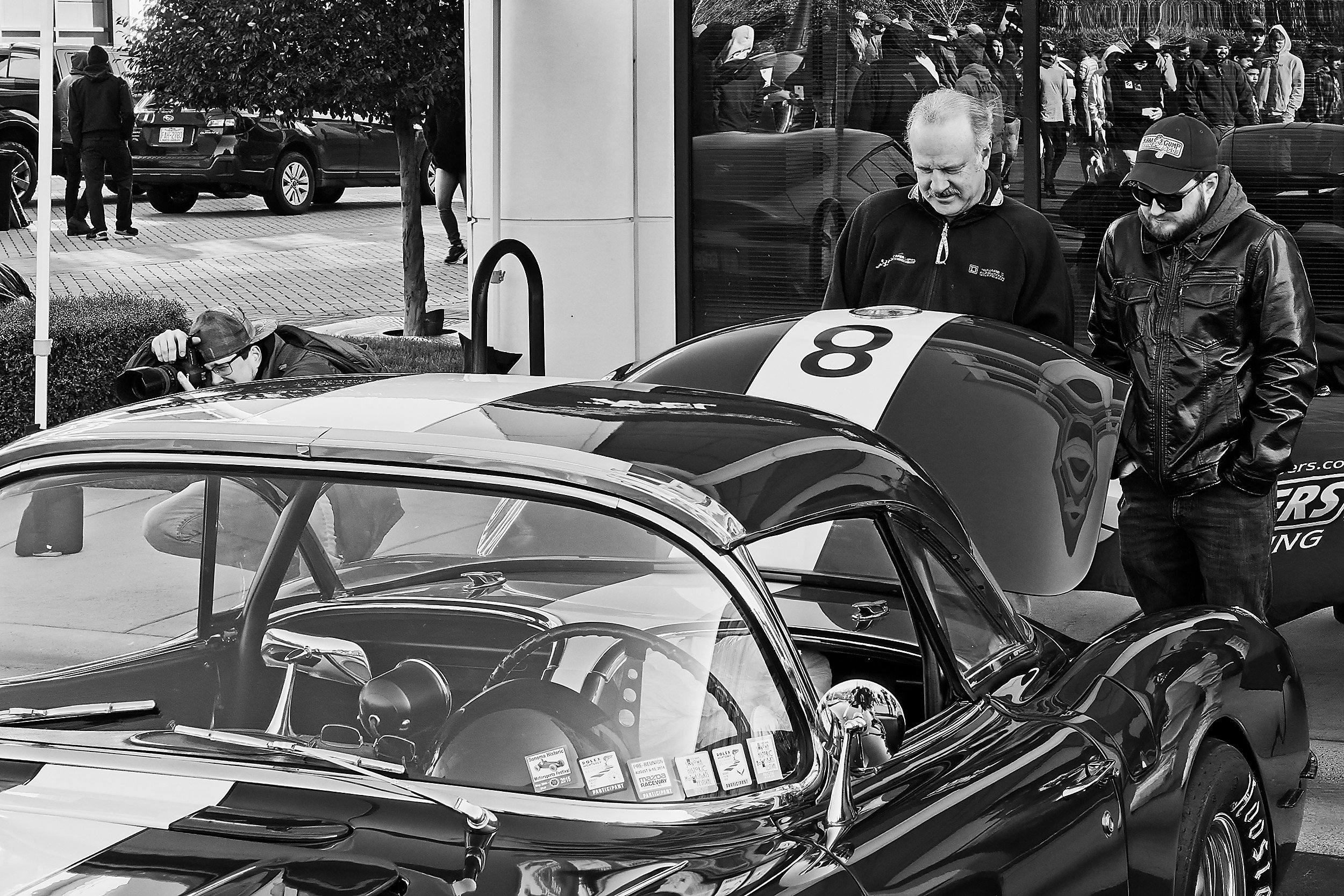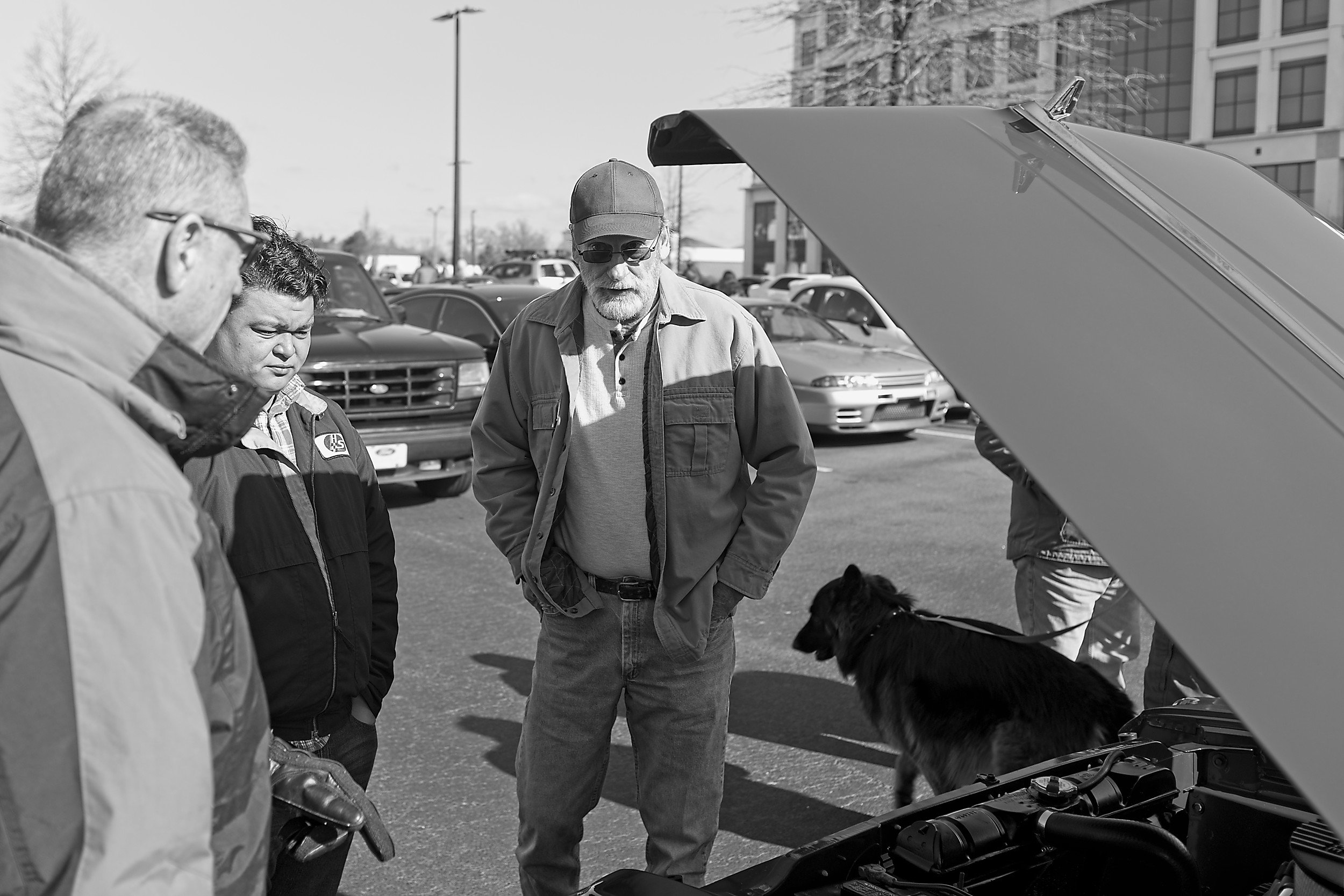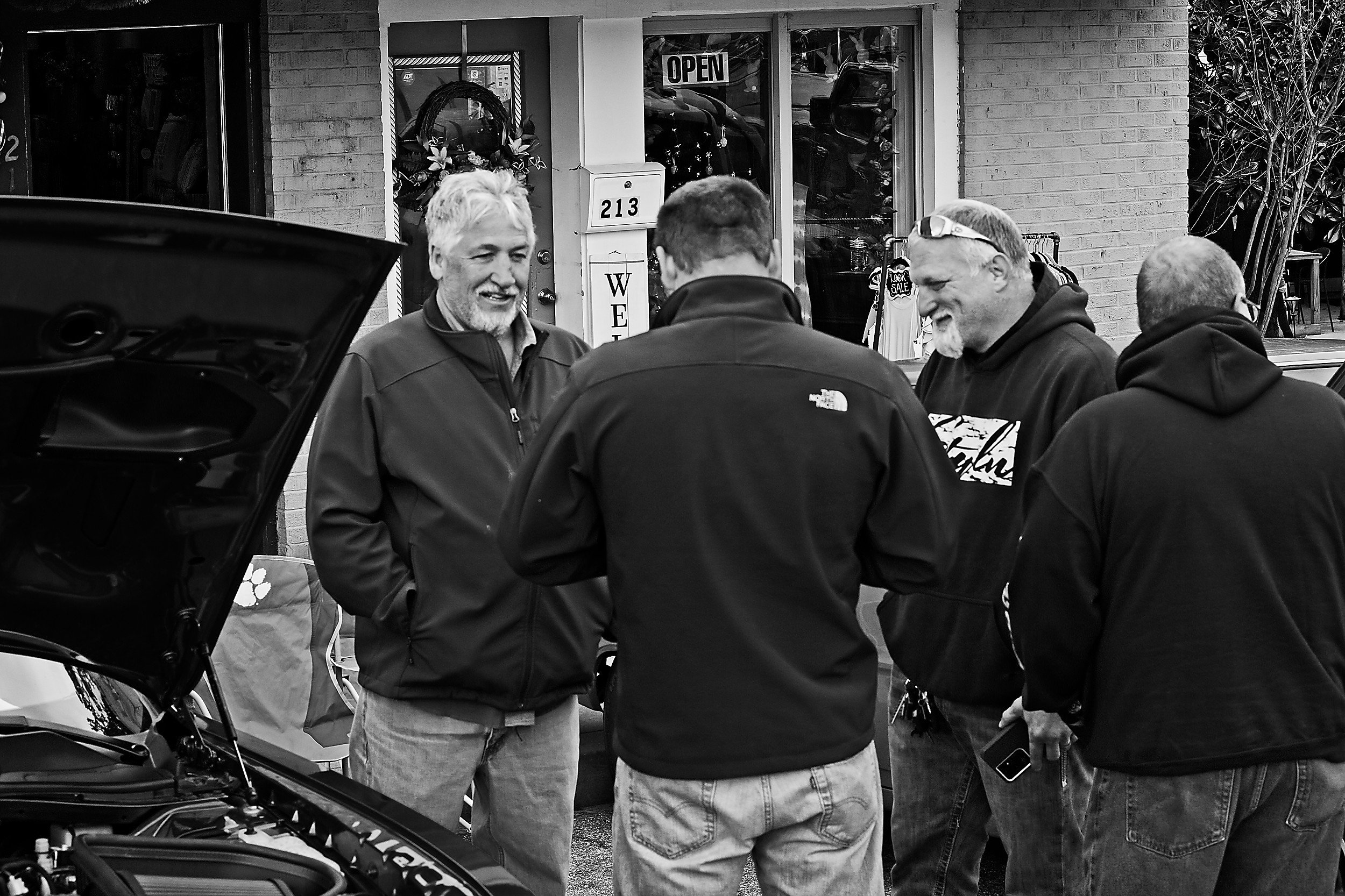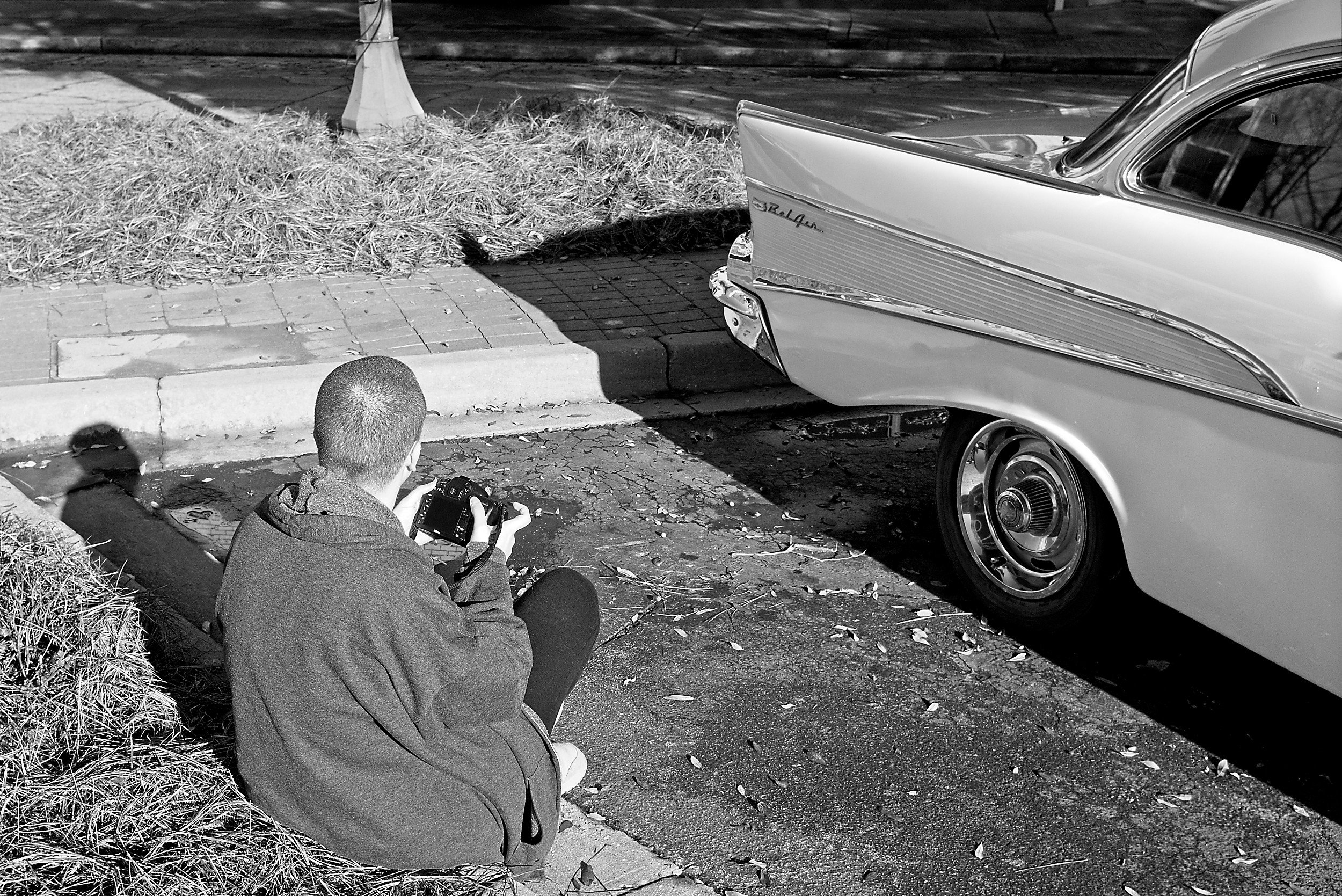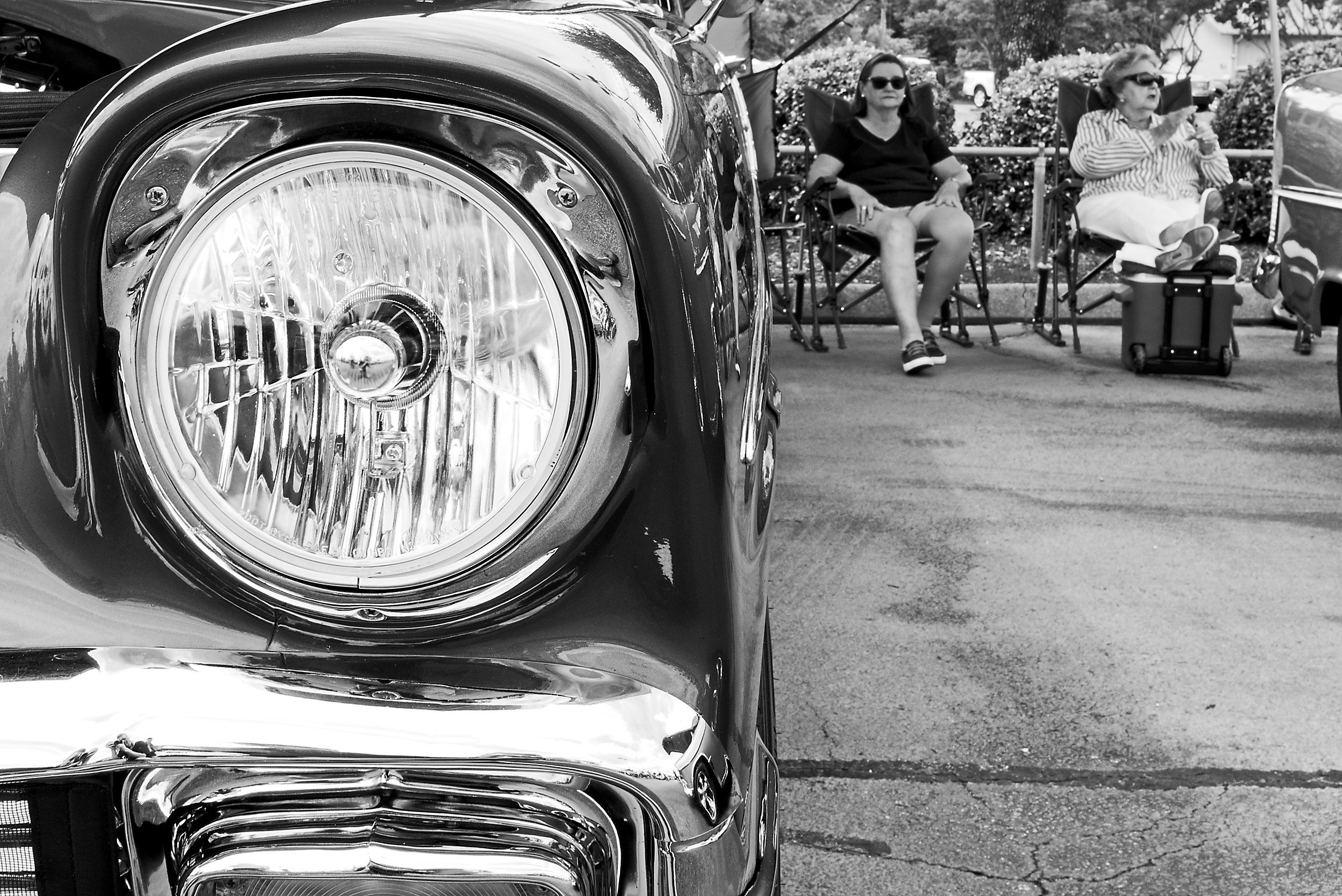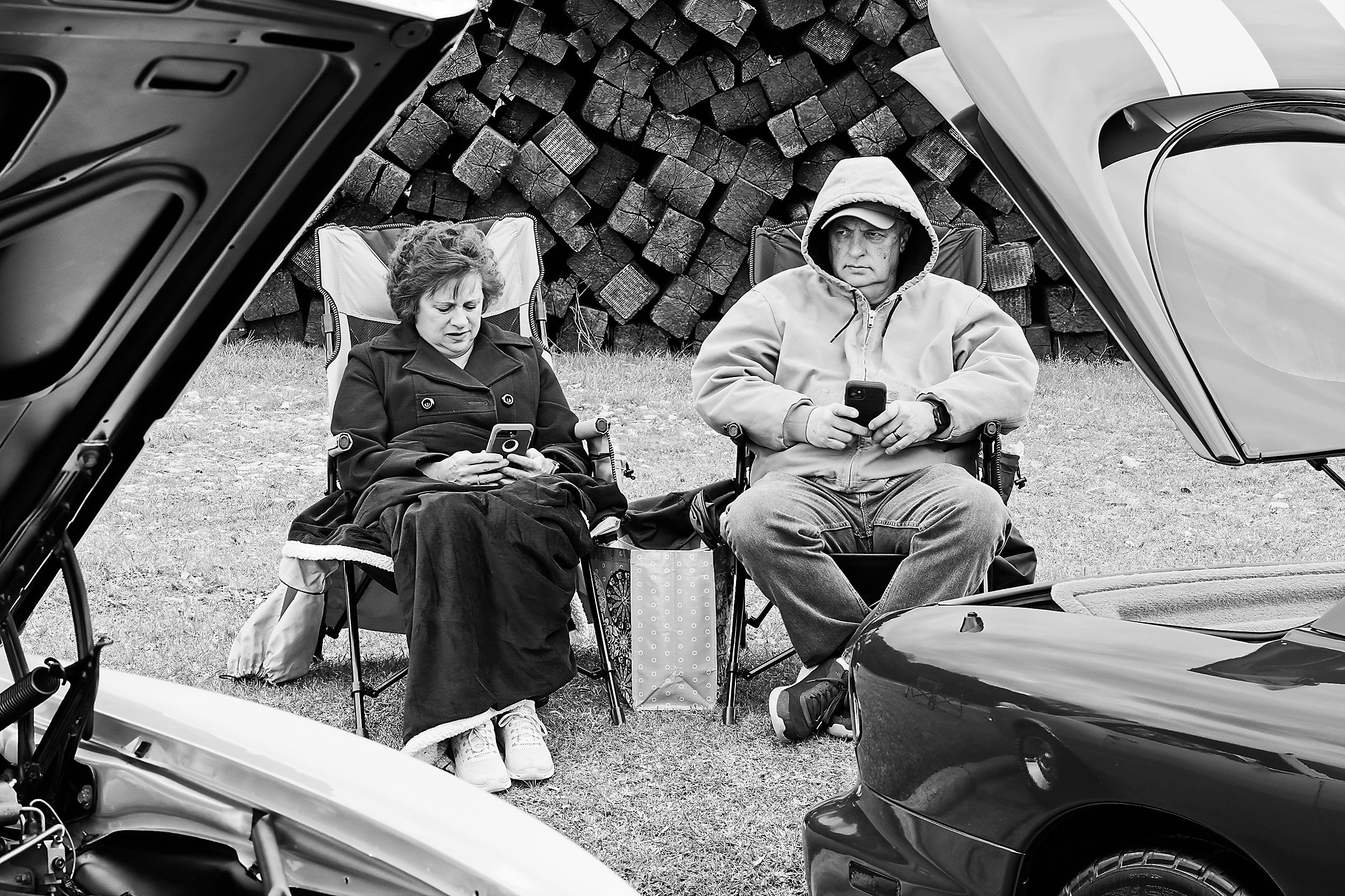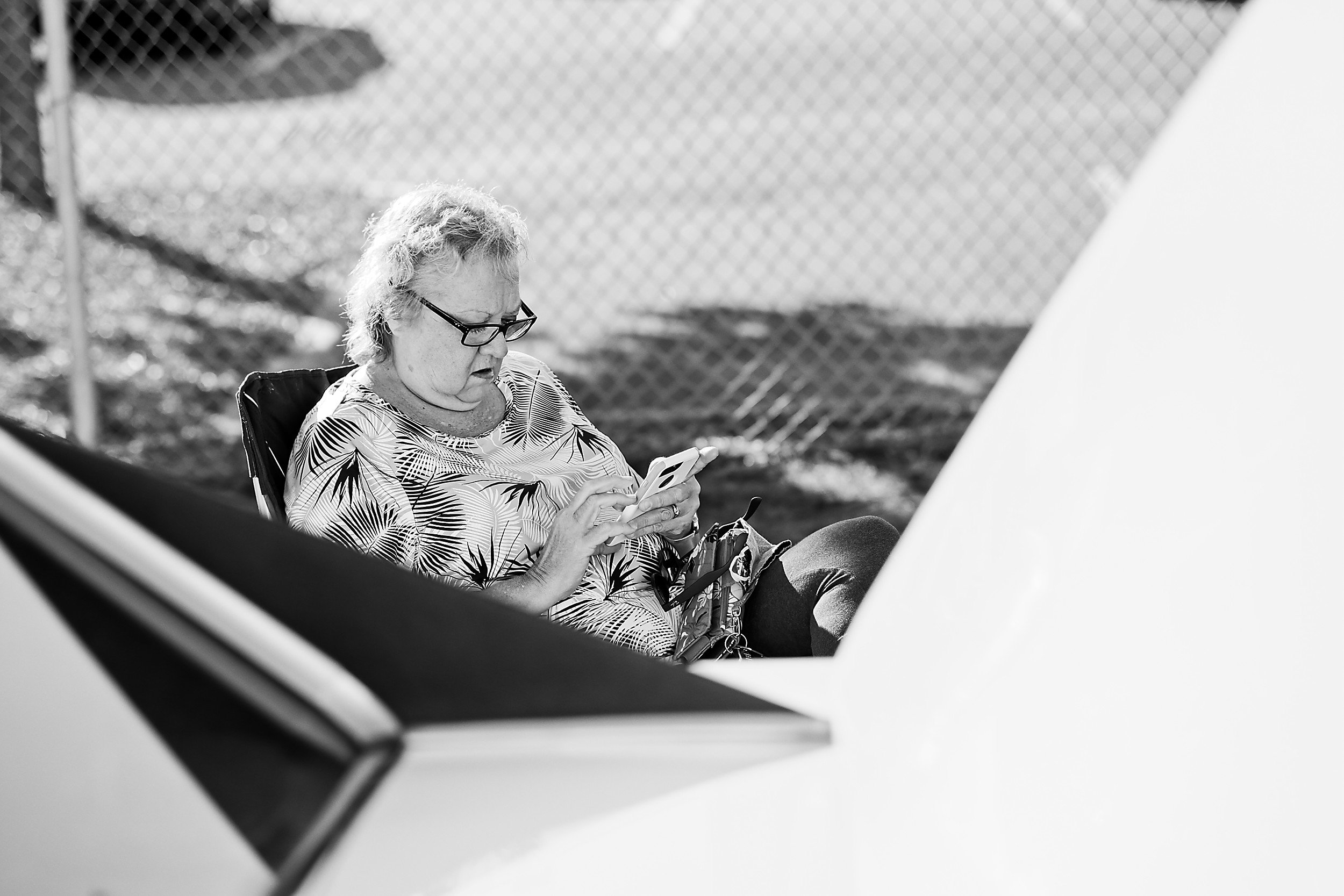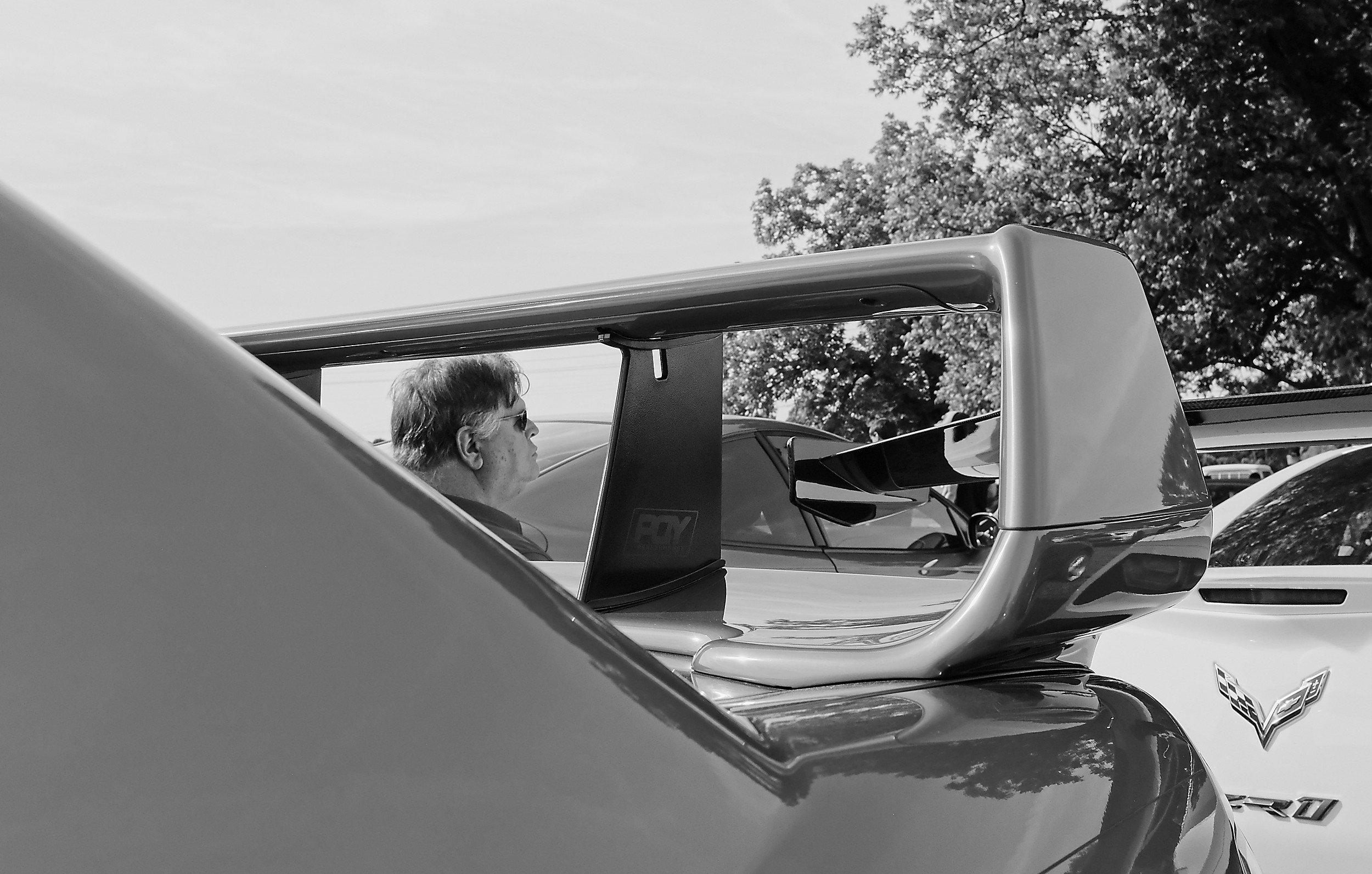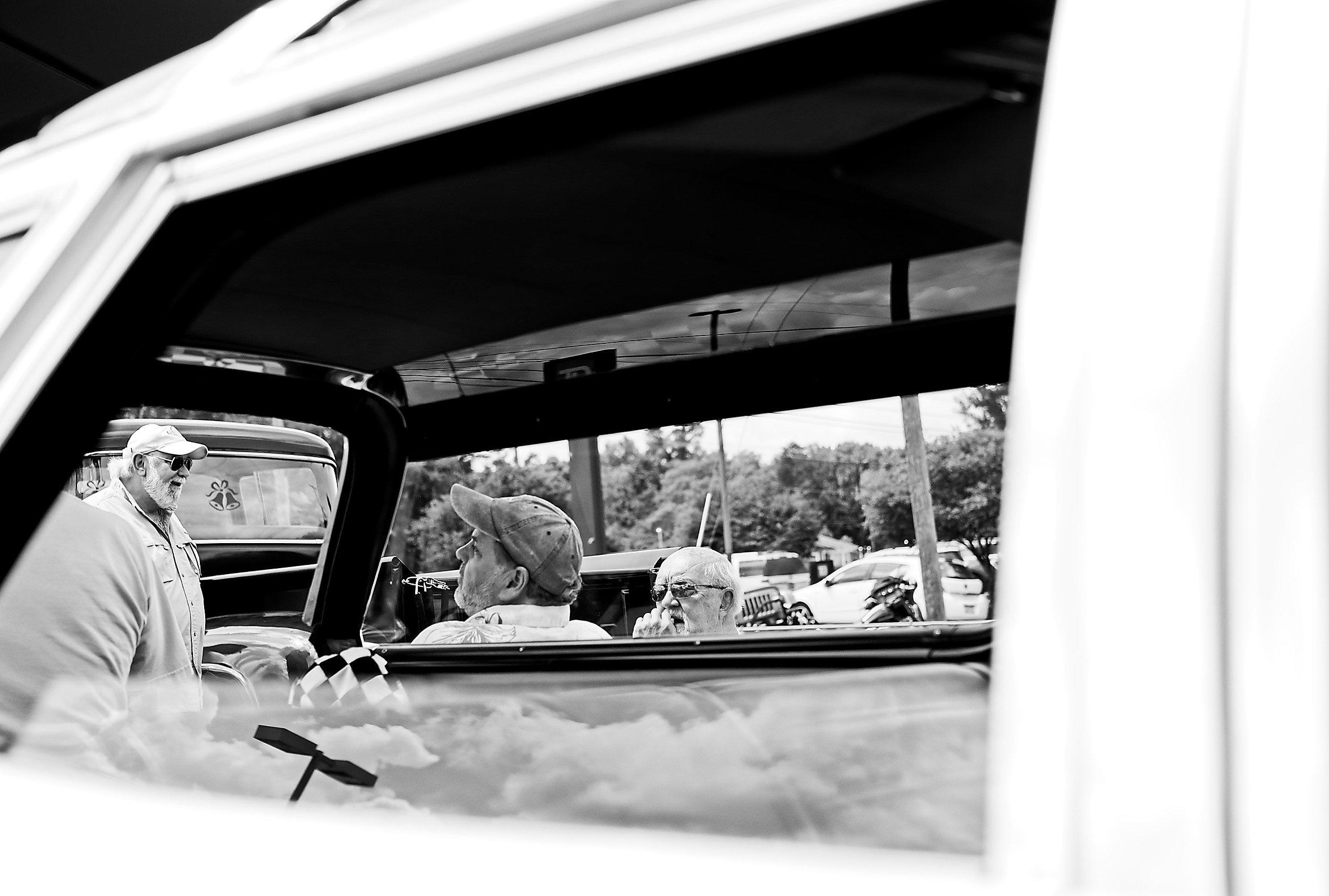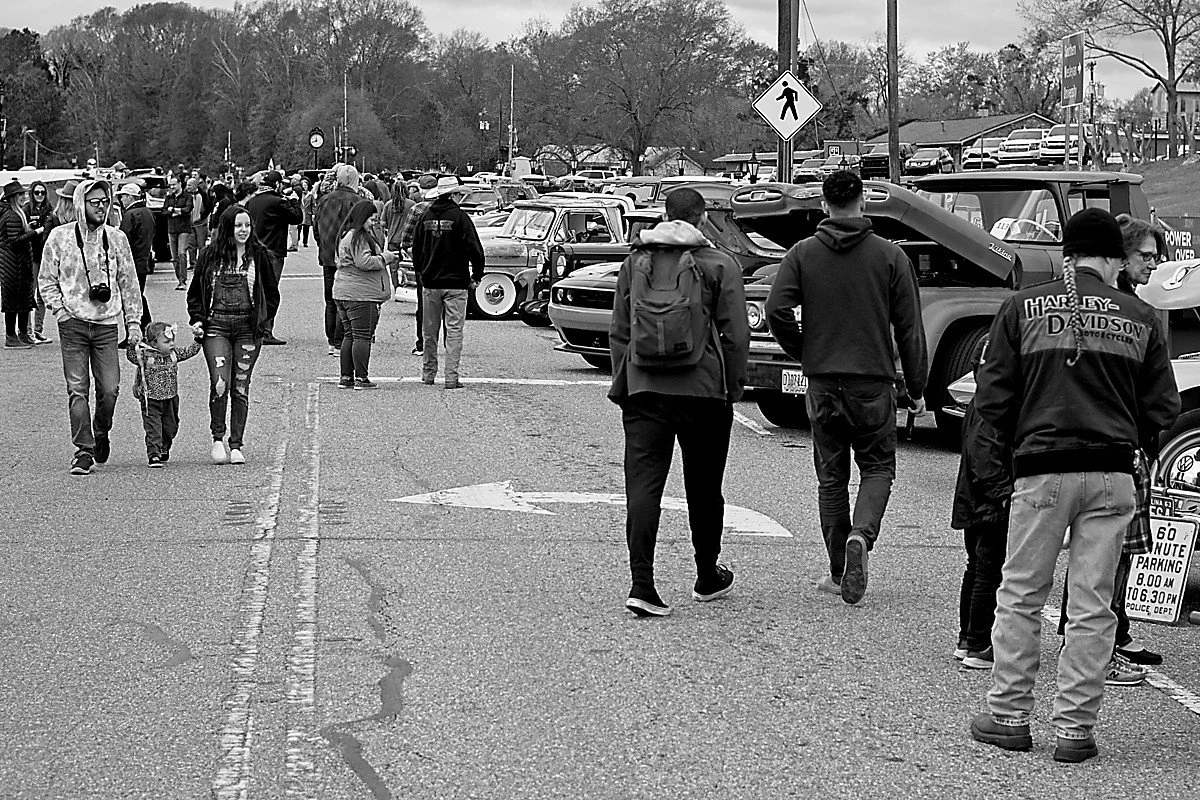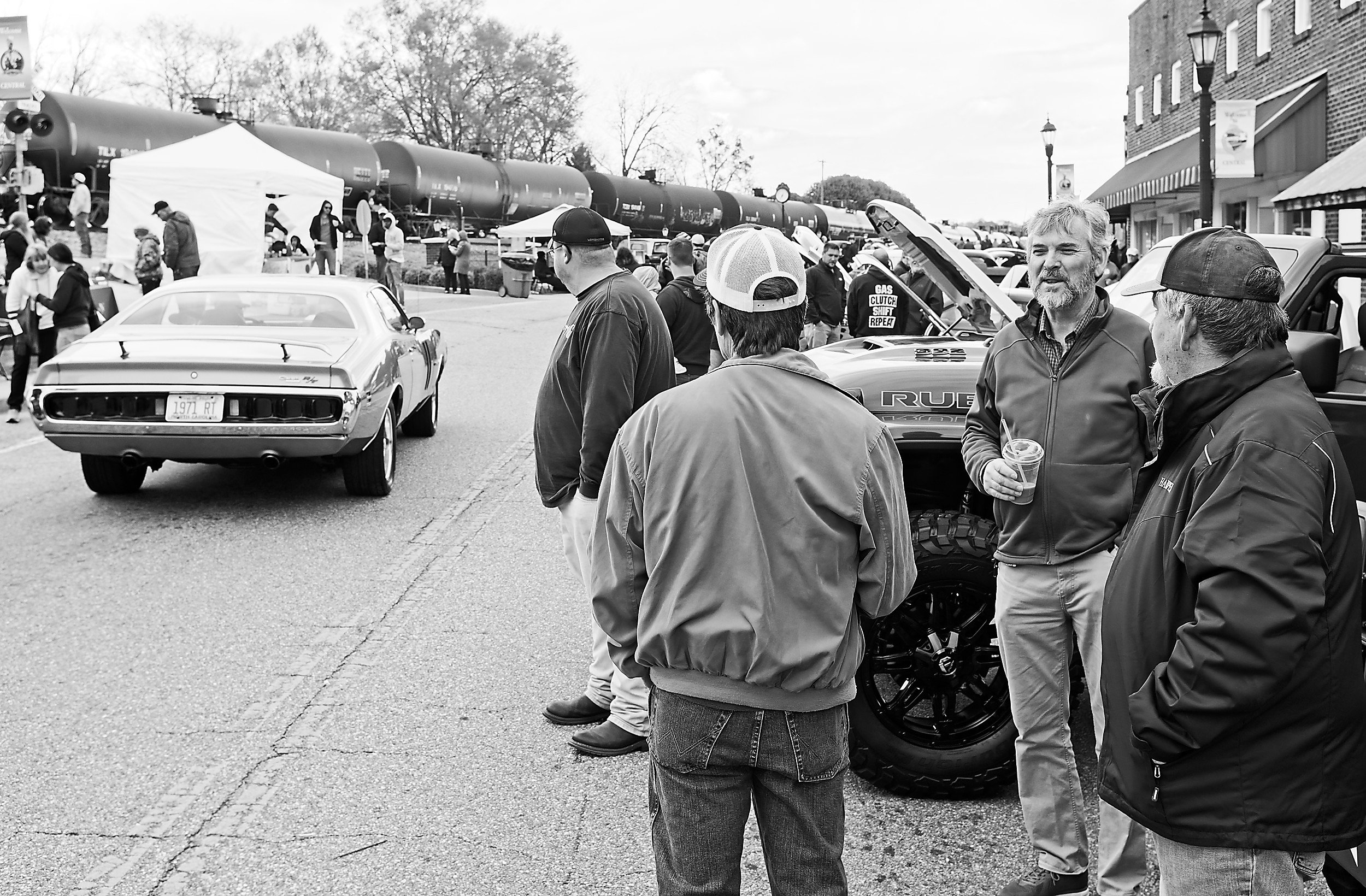AUTOFOCUS
Car shows are a melting pot of people from different backgrounds and cultures who come to share and celebrate their passion for all things automotive.
This photo essay introduces you to these people, who make car shows come alive.
Since their conception, cars have captured the interest of all kinds of people: those who are interested in design, those who are interested in racing, people who are interested in mechanics and engines, those who like to show off with fancy cars, and individuals who collect cars, to name a few.
Cars can become demanding: we spend time and money on them, and it is not without reason that they, in Dutch, sometimes are called "de heilige koe", the sacred cow.
And looking at cows appears to be a fun pastime for many.
Interestingly, these car shows, where enthusiasts come together to show off and look at vintage, muscle, or other gas-guzzling vehicles, appear to be social equalizers: people from all social classes and all walks of life attend and mingle—the rich guy with his speckless British sports car, the local guy with the vehicle he pulled from a Southern swamp, and the young kid with her perfectly tuned muscle car.
While people of all ages and backgrounds attend vintage car shows, they are generally enthusiasts and collectors who sincerely appreciate the history and craftsmanship of cars and enjoy learning about the unique stories behind each vehicle.
Some people attend these events to admire the cars, while others are there to buy, sell, or trade cars or parts. Others are just fans who enjoy admiring the vehicles' designs. These shows often also attract families who enjoy spending time outdoors and appreciate cars as a part of American culture.
Many attend these events to learn more about automotive history and design and appreciate the unique stories behind each vehicle. Specifically, vintage car shows provide a sense of nostalgia, allowing attendees to step back in time and experience the magic of automotive design from bygone eras.
Regardless of why someone would attend, car shows provide a fun and exciting ambiance and great opportunities to socialize with others who share their passion for cars.
Some attendees sit, relax, and display their vehicles. Others passionately discuss the merits of their and other cars with like-minded enthusiasts: watching, comparing, learning, and sometimes longing or envying.
While it is a predominantly male culture, there are female enthusiasts. And there are, of course, the spouses: sometimes as involved and enthusiastic as their hubbies, sometimes just tagging along and focusing on their crochet work, chatting with other spouses they have met at previous shows, maybe checking their social media, waiting for the show to end.
Spouses dragged to a car show by their car-enthusiast partner may not be as interested in cars as their partner. Fortunately, however, these events usually offer plenty of additional attractions and activities to entertain everyone.
For example, car shows often have food vendors, live music, or other entertainment options. There may also be activities for children, such as face painting or games. And if you are not interested in watching cars, you might enjoy people-watching or simply taking in the event's overall ambiance.
In addition, some car shows may offer educational opportunities, such as workshops or presentations about classic car restoration or the history of specific vehicles.
With the right attitude, these shows can be fun, enjoyable experiences for everyone, regardless of their interest in cars.
Ultimately, the key to enjoying a car show is to keep an open mind and focus on the enjoyable aspects of the event, whether the cars, the food, the entertainment, or the people-watching.
Observing the different types of spectators is a feast.
The enthusiast, who comes to enjoy the show, interacts with others and admires the cars. The nit-picker, who knows every brand and what's wrong with it. The know-it-all, who knows precisely how he would have restored or tuned a vehicle and tells everyone who wants to hear (and everyone who doesn't). The dad, who owned at least four of the vintage car types on display. And finally, the photographer, unfortunately, sometimes behaving as if the show is only organized for their convenience, pushing other people out of the way to get that one perfect image.
As mentioned, most people who attend these shows are enthusiasts who share a love for cars and enjoy the community that surrounds them.
Some attendees, however, may be competitive or argumentative about their vehicles and have to be encouraged to respect the rules or other attendees. They may consider themselves "wise guys" or "know-it-alls" (although they might not use these terms) regarding cars and often have considerable knowledge about specific vehicles, parts, or restoration techniques. They may be eager to share their expertise with others, but, unfortunately, while their enthusiasm and knowledge can be helpful, sometimes it's wise to approach these individuals cautiously. Some of these self-proclaimed experts may dismiss others who may not have as much knowledge or experience in the classic car community. They may come across as condescending or unapproachable, which can be off-putting to others trying to learn or engage with the community.
It is necessary, however, to note that car shows are typically well-organized events with rules and regulations to ensure all attendees' safety and enjoyment. Most people who attend these events respect these rules and regulations and work to create a positive and enjoyable atmosphere for everyone.
As we say goodbye to the car show and the people who made it unforgettable, we're reminded that cars have the power to bring people together, regardless of their differences. The dedication, hard work, and enthusiasm of car enthusiasts make car shows more than just an event but a community.
Please read the blog post “Beyond the Cars: Photography as a Window into the People and Communities that Surround Car Shows” for background information on why I love creating these kinds of images and essays.

